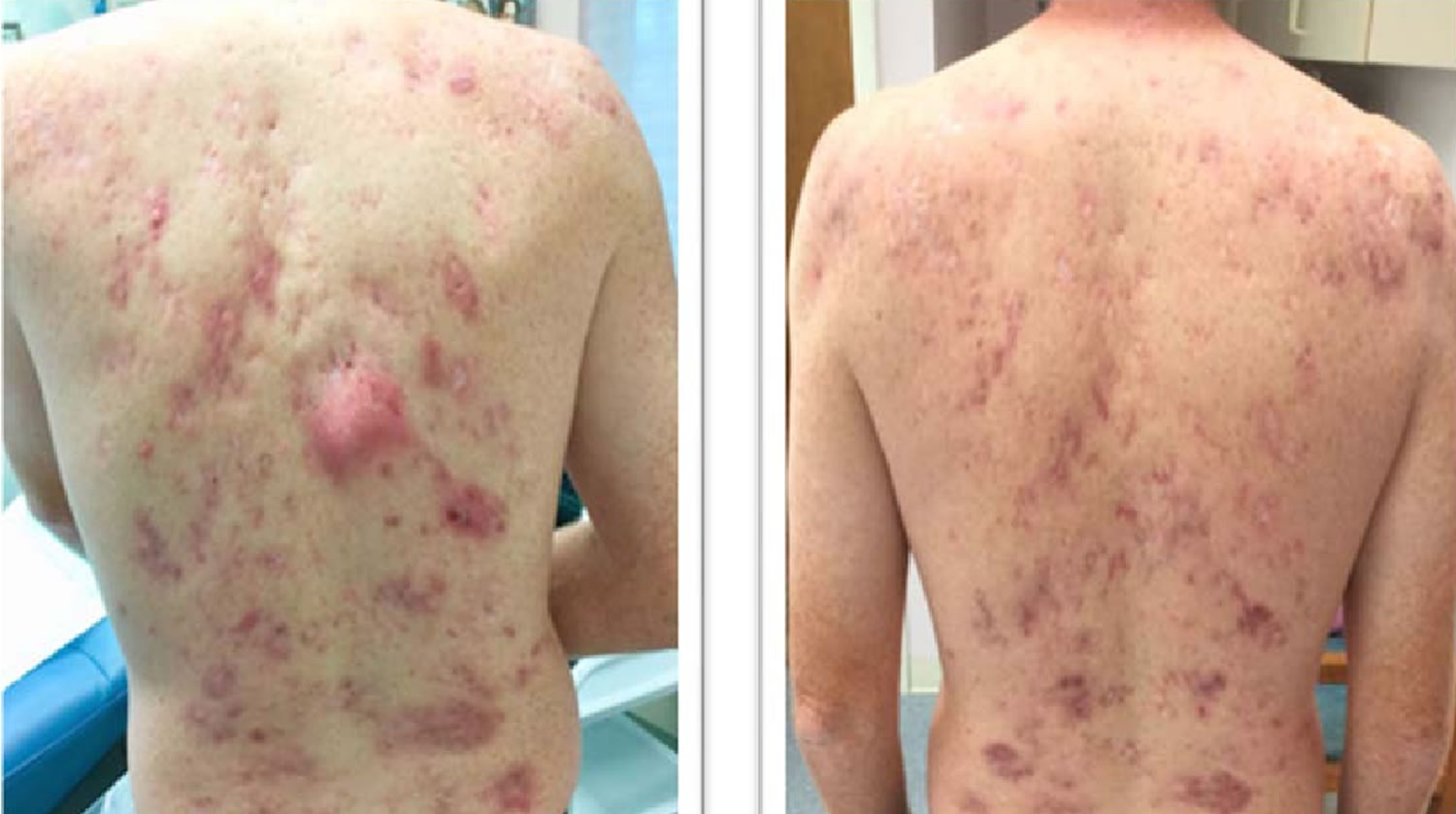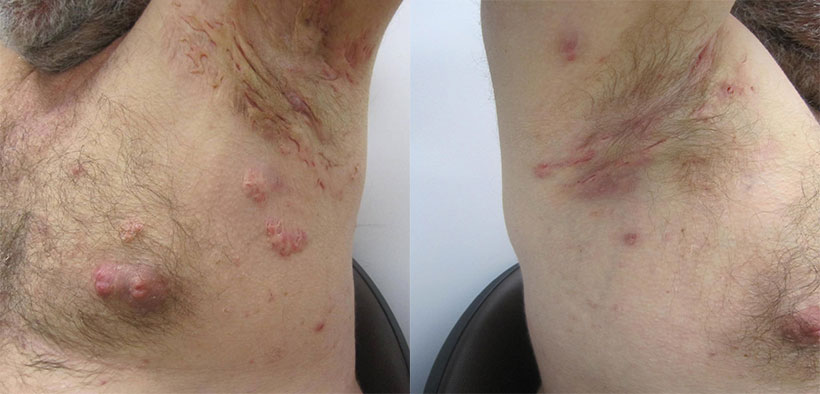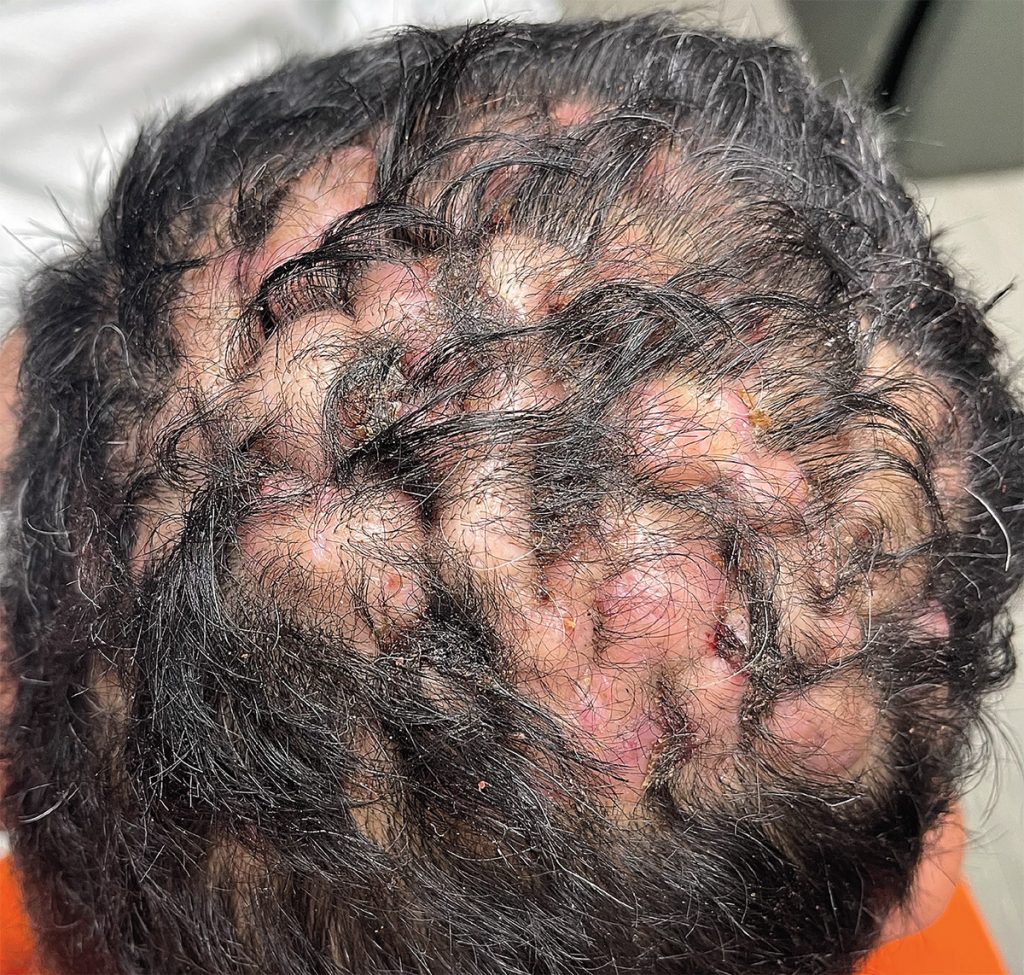
Acne conglobata, hidradenitis suppurativa, and dissecting cellulitis of the scalp are
diseases of adults in which follicular occlusion seems to play a part in pathogenesis. the
conditions may coexist. Pilonidal cyst is another member of the ‘folliculitis occlusion
tetrad’. Seronegative spondyloarthropathy has been described in association with both
acne conglobata and hidradenitis suppurativa, as has PG. Rarely, SCC may complicate
chronic disease.
Acne conglobata
What should I look for?
• Open comedones (blackheads) clustered into groups on the face and trunk. Papules,
pustules, and nodules typical of acne.
• Fluctuant abscesses (‘cysts’) draining pus on the face, chest, and upper back, but also
sometimes affecting the buttocks, groins, and axillae when signs overlap with those of
hidradenitis suppurativa.
• Interconnecting sinus tracts linking adjacent abscesses.
• Large bowl-like scars, hypertrophic scars, or keloids.
Hidradenitis suppurativa
Hidradenitis suppurativa (acne inversa) is a chronic debilitating inflammation of the
flexures, often misdiagnosed as staphylococcal furunculosis. Pathogenesis is uncertain,
but follicular plugging may cause dilatation and rupture of follicles with 2° inflammation
of apocrine glands. hidradenitis is associated with obesity, polycystic ovary syndrome,
and insulin resistance. Also associated with IBD, particularly Crohn disease. Cutaneous
Crohn disease may simulate hidradeniti. Rarely associated with PG and acne (PASH
syndrome).
What should I look for?
• Recurrent ‘boils’ in axillae, breasts, groins, vulva, or perianal skin. Women tend to have
involvement of the front of the body (groin, breasts), and men the back of the body
(buttocks, perianal).
• Signs of insulin resistance: skin tags, acanthosis nigricans around the neck or flexures,
obesity (flexural friction and sweating probably exacerbate follicular occlusion and the
tendency to hidradenitis).
• Grouped open comedones (blackheads) in affected skin suggest hidradenitis—a useful
sign in patients with recurrent flexural ‘boils’.
• Tender nodules, abscesses, scars, and sinuses in flexures.

Dissecting cellulitis of the scalp
This rare condition, also known as ‘perifolliculitis capitis abscedens et suffodiens’, is
commoner in black-skinned patients.
What should I look for?
• A history of recurrent and chronic painful abscesses in the scalp.
• Tender subcutaneous fluctuant scalp nodules, some of which drain pus, and
intercommunicating sinuses.
• Patchy scarring with loss of hair (scarring alopecia).
